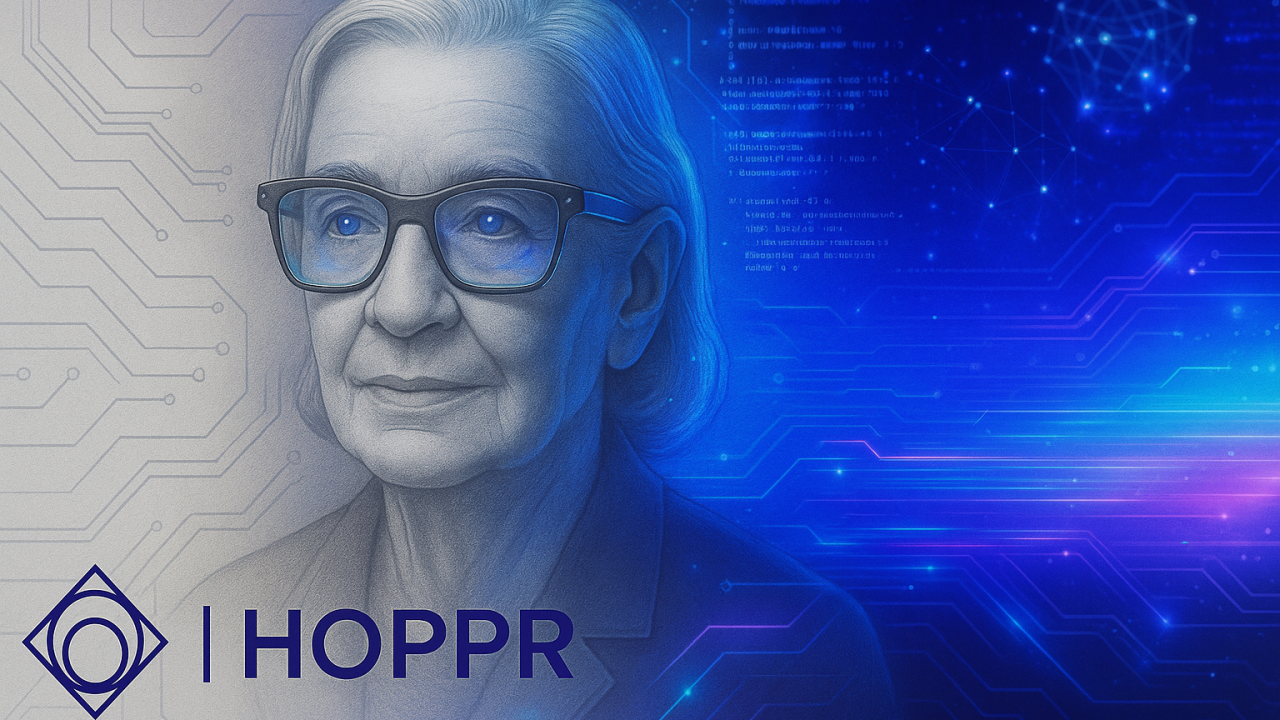Part II: From Grace Hopper to Generative AI: How Standards Built the Future of Medicine
Written By: Roger Boodoo MD
Grace Hopper’s backward-running clock wasn’t a gag; it was a daily reminder to question what’s “normal.” If the status quo slows you down, turn the hands the other way. That mindset - question the norm, codify the better way, and share it - laid the foundation for the artificial intelligence now arriving in medicine. HOPPR carries her name for a reason.
Click here for Part I: Admiral Grace Hopper
Inflection Points Make Builders
Pearl Harbor turned a mathematics professor into a naval officer and systems thinker. Our generation’s “day everything changed” was the pandemic.
In crisis, clinicians and technologists stepped into new lanes - standing up telehealth in days, unlocking data silos, and rebuilding workflows under pressure. Urgency became a catalyst for innovation.
Radiology volumes keep climbing while the workforce stretches thinner. That pressure looks like our next inflection point. Is this the moment AI helps us keep pace—safely, consistently, and at scale?
From a Room of Gears to Intent-Driven Systems
In the 1940s, facing a room-sized computer, Hopper did something radical: she wrote the manual. Hundreds of pages transformed mystery into method so the next person didn’t start at zero. Then came compilers that turned human instructions into machine action. That wasn’t just programming; it was democratization.
Healthcare followed that same ladder, one rung at a time. DICOM let CTs and MRIs move seamlessly between scanners, PACS, and viewers. HL7—and later FHIR—gave clinical data a common grammar. APIs like DICOMweb and SMART on FHIR turned integration from bespoke craftsmanship into a repeatable pattern.
Each layer pulled computing closer to the people who need it most. Soon, we’ll “program” by expressing clinical intent:
Bring the last two chest CTs, align the priors, track the nodule, draft the follow-up.
Hopper wrote the first bridge between human language and machine logic; now, collectively, we’re crossing bridges that connect entire health systems.
Interoperability as Service, Not Slogan
When Hopper returned to uniform, her mission was to unify a Navy of incompatible systems so the fleet could act as one. Healthcare and Enterprise Imaging are not much different - an ecosystem of vendors and viewers all orbiting a single patient. A model that cannot integrate with current systems is just another silo with a shiny interface.
At HOPPR, we build for that reality. Our API-based platform enables integration directly with imaging, EHR, and reporting systems, letting AI act like part of the team - not another tab. Interoperability isn’t a tagline; it’s how AI becomes invisible, reliable, and clinically relevant.
The Moth in the Log
Hopper’s “bug” wasn’t a quirky footnote - it was a philosophy. Inspect. Document. Fix. Share. That discipline still matters.
Today’s “moths” look different: data drift or an AI model that’s confident when it shouldn’t be. Reliability in clinical AI isn’t a switch you flip - it’s a continuous practice of validation, monitoring, audit trails, and collaboration with the clinicians who live in the workflow.
Trust isn’t built once; it’s a relationship that needs tending.
The Long Arc to AI
This wasn’t a leap; it was a ladder.
Manuals and compilers made one machine usable by many.
DICOM and HL7/FHIR made many machines interoperable.
Modern APIs made that interoperability developer-friendly.
On those rails, clinical-grade AI can finally learn, reason, and assist in real workflows. Hopper’s throughline is visible from end to end: question the default, codify the better way, and hand it forward.
Where We Go from Here
Two near horizons matter most.
First, medical-imaging foundation models that truly work - AI with the consistency of a radiology resident on well-bounded tasks, and the judgment to know when to escalate.
Second, agents for the mundane - systems that safely shoulder the work that steals our time: hanging priors, protocol selection, follow-up scheduling, the “chart review” before tumor boards.
If we reach those horizons, it will be because we keep following Hopper’s pattern. The clock on the wall may run backward - but the work runs forward, on "Hopper time." At HOPPR, that’s the future we’re building.
Personal note: Grace Hopper’s story resonates deeply with me — as a Navy veteran, radiologist, and informaticist, I recognize her courage to question the norm and the duty to build what lasts.

